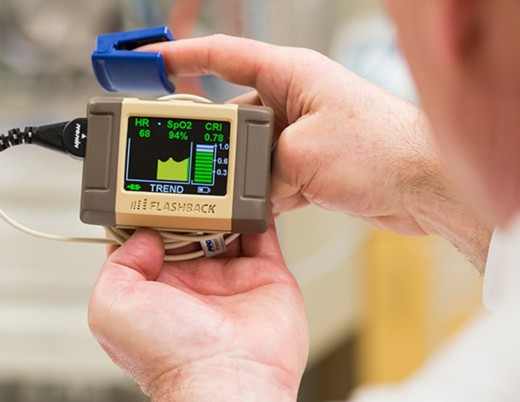It's not lost on pediatric hand surgeon Sarah Sibbel, MD, that many tools in her operating room are just as commonly found in toolbelts.
"It's kind of like carpentry," she says. "We use saws, we use plates and screws; sometimes we use a hammer. The tools are sometimes rudimentary."
Of course, a chair or a cabinet will never feel pain or grow, whereas the ulna and radius of a child will. That's what Dr. Sibbel is holding now, or rather a model of those bones, fabricated based on CT scan data from a 10-year-old patient — a not-so-rudimentary device.
Remodeling a hand
These particular bones were broken and badly healed some years before Dr. Sibbel ever saw them. Complicating matters was that, in the time since the original break, the bones had grown and twisted to adapt to one another, a phenomenon known as "remodeling."
"It's very difficult to assess remodeling in 2D," Dr. Sibbel observes. "On an X-ray, you can see the crooked bone, but you miss those subtle changes in the rotation of the bone as children grow."
Using the 3D-printed model, Dr. Sibbel can plan in advance each cut of the intricate, painstaking process of surgically straightening the bones — a plan that must not only correct past growth, but anticipate growth in the future. It’s the carpentry equivalent of building a credenza with warped boards that will be 30% larger 10 years from now.
"I can simulate surgery on the computer before I ever operate on patients. I can retrofit custom guides to use intraoperatively to show me where to make the osteotomy. It makes me more exact."
— Sarah Sibbel, MD
Given the circumstances, it's almost astonishing how positive the results routinely are for Dr. Sibbel's patients. Indeed, for correcting hand and forearm deformities, Dr. Sibbel's outcomes are among the best in the nation — a fact Dr. Sibbel credits not to her own surgical skill, but to the team she co-leads, along with colleague and pediatric orthopedic surgeon Frank Scott, MD, at the Hand and Upper Extremity Program at Children's Hospital Colorado.
Staying ahead of the game
After surgery, Dr. Sibbel's patients work with a team of specialists including dedicated hand therapists, whose expertise covers not only pediatric orthopedics, but burn, trauma and other disciplines. Each member of the team informs each aspect of a process dedicated to getting patients not just fixed, but healed.
"The 3D modeling and printing is pretty cool and cutting edge," Dr. Sibbel says. "But I think that collaboration is really what keeps us ahead of the game."
Featured Researchers

Sarah Sibbel, MD
Director of Pediatric Hand and Upper Extremity Program
The Orthopedics Institute
Children's Hospital Colorado
Associate professor
Orthopedics
University of Colorado School of Medicine





 720-777-0123
720-777-0123










